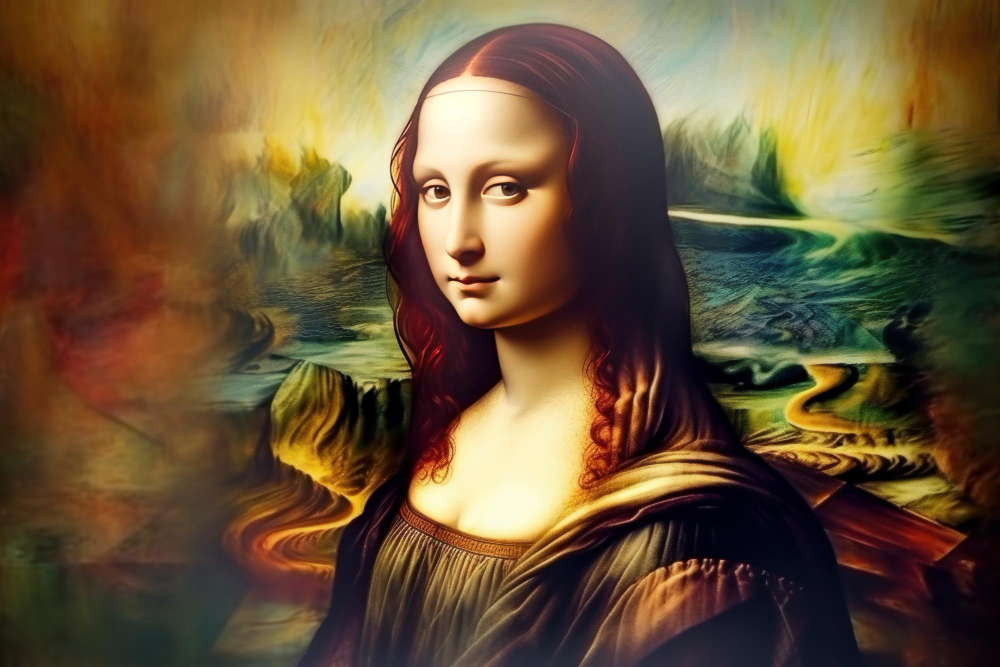
Why is the Mona Lisa So Famous? Unraveling the Enigma Behind the World’s Most Celebrated Portrait
In the grand tapestry of art history, few works have captured the world’s imagination, like Leonardo da Vinci’s enigmatic masterpiece—the Mona Lisa. With her mysterious smile and mesmerizing gaze, the Mona Lisa has transcended time, cultures, and artistic genres to become an icon of unparalleled fame. But what lies beneath the surface of this celebrated portrait? What has elevated the Mona Lisa to fame that few artworks can claim? Join us on a journey of exploration as we unravel the enigma behind the world’s most famous portrait.
Mona Lisa: An Enigmatic Smile that Haunts
The Mona Lisa’s allure begins with her gaze—a gaze that seems to follow you wherever you stand. With its subtle play of light and shadow, her enigmatic smile has intrigued and captivated art enthusiasts for centuries. Leonardo da Vinci’s mastery of sfumato, a technique that blends colors and tones seamlessly, lends an ethereal quality to the painting. This delicate balance between mystery and realism creates an emotional connection that transcends time and invites viewers into the woman’s world within the frame.
The Intrigue Continues
One of the enduring mysteries surrounding the Mona Lisa is the identity of the woman depicted. While many art historians believe she is Lisa Gherardini, the wife of Florentine merchant Francesco del Giocondo, some theories suggest other possibilities. This ambiguity fuels speculation and invites viewers to project their narratives onto the painting, adding to its enigmatic aura. The elusive identity of the subject serves as a canvas upon which imagination runs wild.
A Marriage of Art and Science
Leonardo da Vinci was an artist and a polymath who seamlessly melded art and science. His meticulous attention to detail, anatomical precision, and innovative techniques set the Mona Lisa apart. The sfumato technique blurs lines and softens transitions, creating a three-dimensional, lifelike quality. Leonardo’s pioneering use of sfumato, combined with his deep understanding of optics, illuminates the Mona Lisa with a realism that was revolutionary for its time.
A Sensational Story
The Mona Lisa’s fame was not solely built on artistic merit—dramatic events also fueled it. 1911, the painting was stolen from the Louvre Museum, leaving a space on the gallery wall. The theft made headlines worldwide, making the Mona Lisa a household name. The painting was recovered in 1913, and its return to the Louvre was celebrated as a triumph of art over crime. This sensational tale cemented the Mona Lisa’s status as a cultural phenomenon.
A Muse for Creatives
The Mona Lisa’s influence extends beyond the realm of visual art. Her enigmatic presence has inspired writers, musicians, filmmakers, and fashion designers. From the famous song “Mona Lisa” by Nat King Cole to Dan Brown’s novel “The Da Vinci Code,” the painting’s impact on pop culture is undeniable. The Mona Lisa has become a symbol that transcends art museums, infiltrating every corner of society and serving as a muse for creative expression.
Parodies and Reproductions
The Mona Lisa’s fame has also birthed a plethora of parodies and reproductions. Countless artists and comedians have reimagined the painting, superimposing her smile onto different subjects, from cartoon characters to famous figures throughout history. These playful interpretations highlight the universality of the Mona Lisa’s appeal and underscore her status as an enduring source of inspiration and amusement.
Spreading the Legend
The rise of mass media and globalization played a significant role in elevating the Mona Lisa to global fame. In the digital age, the painting’s image can be instantly accessed by people worldwide. The Mona Lisa’s ubiquity in textbooks, posters, advertisements, and online platforms has solidified her status as a symbol of cultural heritage and artistic excellence that transcends geographical boundaries.
The Louvre Experience
The Mona Lisa’s fame is also fueled by her physical residence—the Louvre Museum in Paris. Every year, millions of visitors from all corners of the globe pilgrimage to the museum to catch a glimpse of the iconic painting. Seeing the Mona Lisa in person becomes a form of validation—an affirmation that one has stood before a true masterpiece. The Mona Lisa’s presence in the Louvre is a testament to her power as a cultural artifact that unites people in their reverence for art and history.
Beyond the Frame, a Global Icon
The Mona Lisa’s fame is not solely rooted in her aesthetic beauty; it is a culmination of her charisma, the brilliance of Leonardo da Vinci, and the collective imagination of generations. Her enigmatic smile, the stories of theft and return, the impact on popular culture—all these elements have contributed to the painting’s status as the most famous portrait in the world. The Mona Lisa’s journey from a Renaissance masterpiece to a global icon is a testament to the enduring power of art to transcend time, capture the imagination, and bridge cultures, inviting us all to be part of her enigmatic story.

